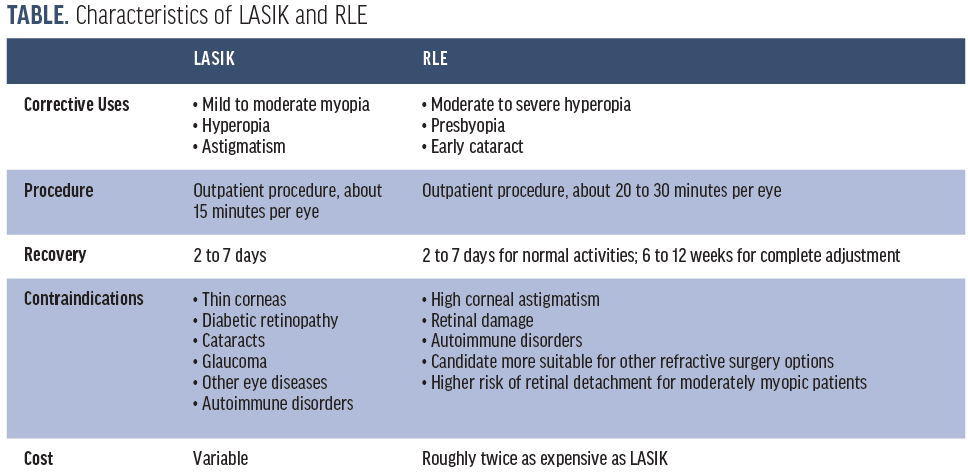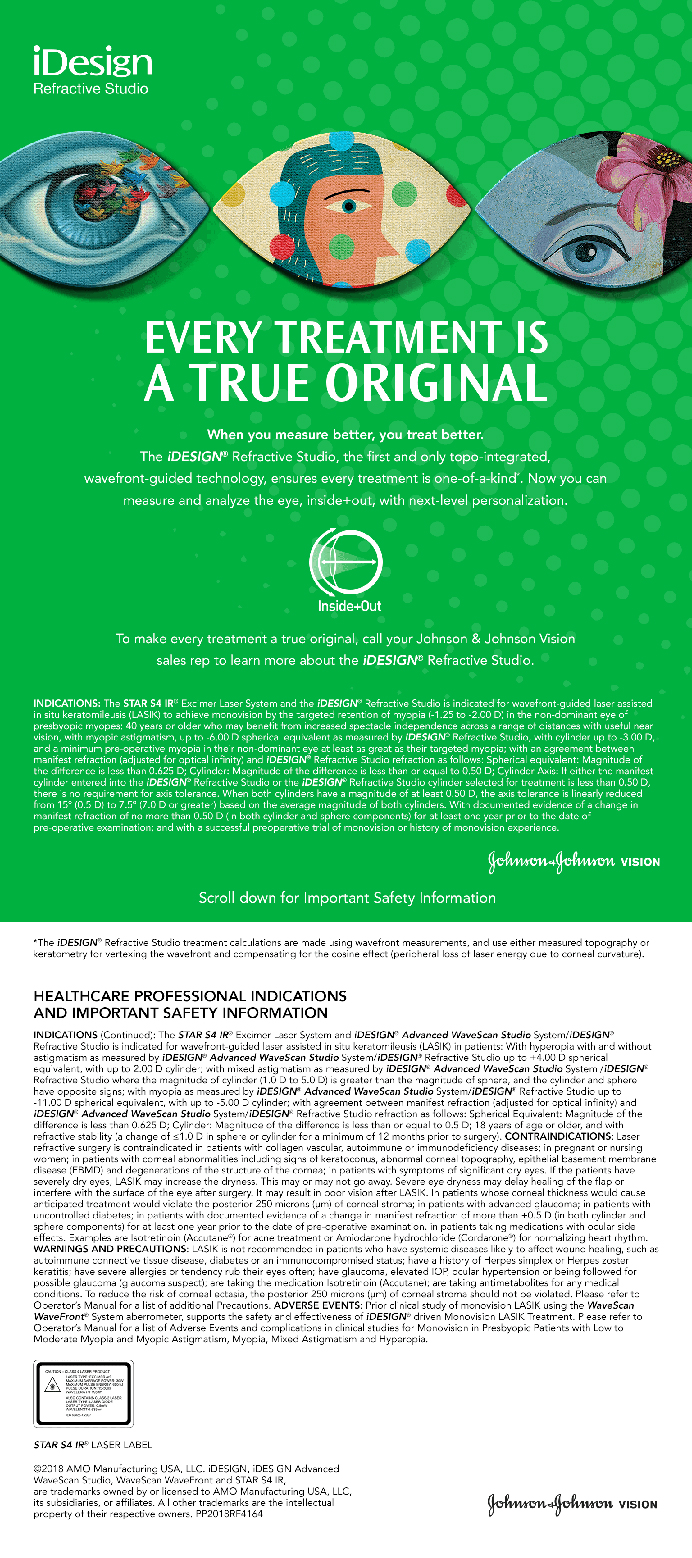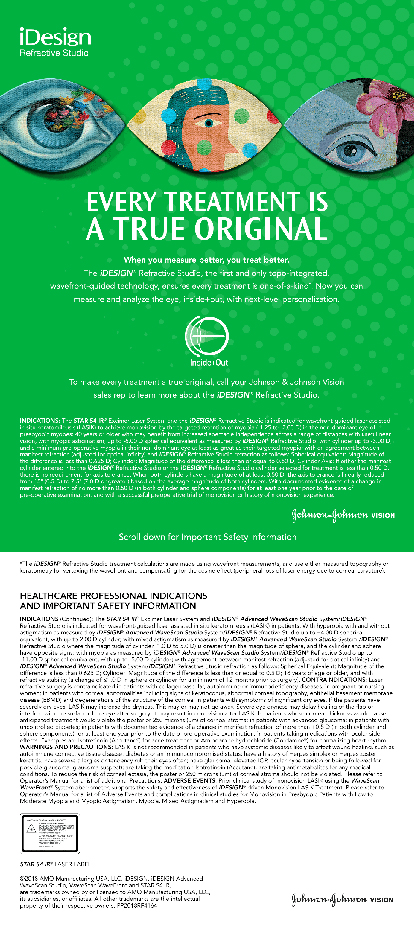With continual advances taking place in refractive surgery, how is a patient to know which surgical procedure will not only best fit his or her current needs but also provide optimal longevity? LASIK has become so popularized and well known that patients use the term erroneously for everything that falls under the refractive surgery umbrella. But, as we all know, we have much more to offer them than this one single (though remarkable) procedure.
I regularly have senior citizens come into my clinic inquiring if they can have LASIK surgery. Due to lens opacities, of course, the elderly population is not suited for a corneal refractive surgical approach. What can we offer them instead? This article offers a comparison of the characteristics, advantages, and drawbacks of LASIK and refractive lens exchange (RLE) with advanced-technology IOLs (Table).

LASIK
LASIK was first implemented in the United States in the early 1990s and has been performed millions of times since then. As of 2016, refractive surgeons had performed more than 40 million LASIK procedures since the initial FDA approval; in 2018 alone, 8 million Americans underwent LASIK.1 The procedure can correct myopia, hyperopia, and astigmatism.
In LASIK, a soft corneal suction ring is applied to the eye to keep movements minimal. A microkeratome or femtosecond laser is used to cut through the corneal epithelium and Bowman layer to create a corneal flap. The flap is then folded back, and an excimer laser is used to precisely remodel the corneal stroma. Once the predetermined amount of stroma has been ablated, the flap is repositioned back in its correct orientation.
Assuming a patient’s cornea is thick enough to accommodate the amount of ablation performed in LASIK, there are no other contraindications, and no lens opacities are present, LASIK is an excellent refractive surgical option, one of the most popular elective procedures in North America. However, there is a significant patient population for whom LASIK is not well suited.
RLE
For patients older than 40 years and for those with severe refractive error or abnormal corneas, RLE may be a more viable option. Especially for patients with presbyopia or hyperopia, RLE with an advanced technology IOL may be the preferred approach to surgical refractive correction.
In a procedure identical to cataract surgery, the patient’s natural lens is replaced with an IOL. One of the advantages of RLE for older patients is that they do not have to wait until they develop cataracts to see more clearly. By opting for this elective procedure before their natural lenses get cloudy, patients will never actually develop visually significant cataracts.
As with LASIK, RLE is performed on an outpatient basis. Unlike LASIK, both eyes are not operated on the same day; typically, the second eye will be operated on the following week after the first eye surgery.
This permanent lens replacement approach is less susceptible to risk of visual regression over time than corneal approaches.
IOL OPTIONS
Patients’ natural lenses can be replaced with different types of IOLs in RLE. Today, so-called advanced technology IOL options include monofocal fixed-focus IOLs, multifocal IOLs, and accommodating IOLs.
Monofocal fixed-focus IOLs can provide good vision at distance, intermediate, or near, but cannot achieve all the distances at once. Multifocal IOLs can provide optimal vision at a range of distances simultaneously. Accommodating IOLs can focus at various distances by shifting position in the eye.
WHICH IS BETTER?
It is important to note that insurance rarely pays for either of these elective procedures. Therefore, it is notable that fees for RLE are generally about double those for LASIK, and this and other differences should be explained to the patient before any comanagement with a refractive surgeon is initiated.
LASIK and RLE each have benefits and limitations. As with any procedure, the better option is the one that is best tailored to the individual patient’s needs. Obtaining a clear understanding of each patient’s wishes and then carefully explaining the options to him or her are crucial steps to achieving successful outcomes.
- LASIK: Know the rewards and risks. July 27, 2018. www.webmd.com/eye-health/news/20180727/lasik-know-the-rewards-and-the-risks Accessed August 22, 2019.






